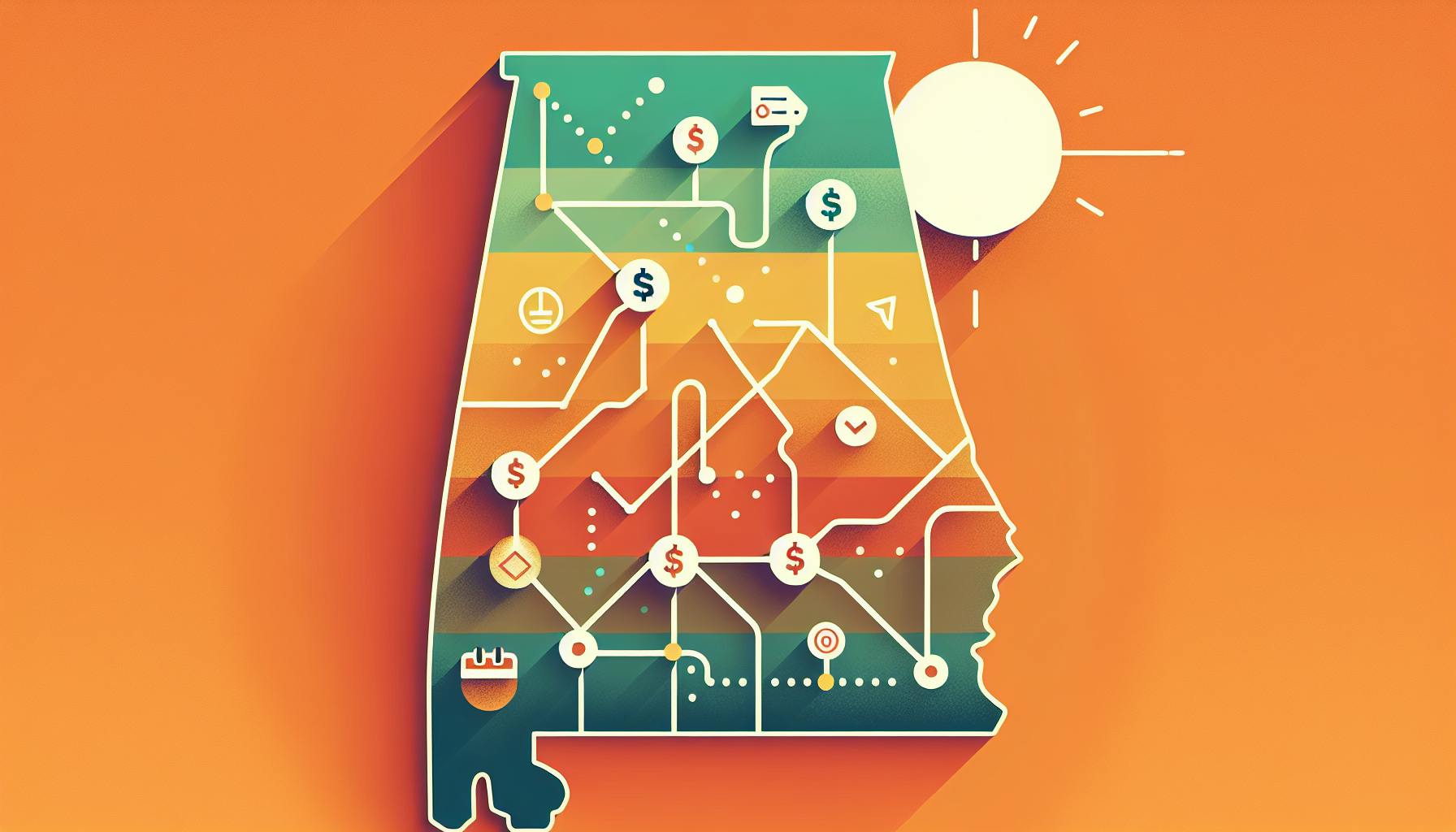Recording loans can be confusing for small business owners using Xero.
This guide will walk through the key steps for properly tracking loans in Xero - including setting up director's loan accounts, recording transactions, and monitoring loan activity.
You'll learn Xero's loan features, best practices for loan documentation, and custom reporting to stay on top of borrowings.Following this advice will help avoid accounting errors and ensure loans are managed correctly in Xero.
Navigating Loan Recording in Xero
This section provides an overview of recording loans in Xero and the key benefits this offers small businesses.
Understanding Director's Loans and Their Significance in Accounting
Director's loans refer to money loaned to or from a company director or shareholder. It is common for directors to loan money to help with a company's cash flow. Accurately recording these loans is important for accounting compliance and financial clarity. Key reasons to record director's loans in accounting software like Xero include:
- Maintaining an audit trail for compliance. Director's loans must be recorded properly.
- Understanding true company cash flow by tracking money flowing in and out.
- Ability to charge interest on loans provided to the company.
- Identifying and managing overdrawn director loan accounts.
Exploring Xero's Loan Tracking Features
Xero makes it easy to record and track director's loans and borrowings. Its key features include:
- Set up a separate Director's Loan account.
- Record bills or spend payments when directors loan personal money to the company.
- Log invoices or record cash/bank payments to track money being paid back to directors.
- Use tracking categories to label loan transactions for reporting.
- Charge interest on outstanding loan amounts.
This simplifies managing director and shareholder loans in one place.
The Advantages of Accurate Loan Record-Keeping in Xero
Properly recording loans in Xero provides many benefits, including:
- Maintaining compliance with financial reporting laws.
- Understanding true company cash flow by tracking all money flowing in and out.
- Ability to charge interest on outstanding loan amounts based on records.
- Identifying and managing overdrawn director loan accounts.
- Enabling accurate reporting and reconciliation.
In summary, using Xero's tools to record director borrowings and repayments enhances transparency, compliance and financial control for small businesses.
How do I account for a loan in Xero?
To account for a loan in Xero, follow these steps:
- Go to the Chart of Accounts and create a new current asset account called "Director's Loan" or similar. This will track the balance owed.
- When you transfer money into the business from your personal funds, record it as a spend money transaction using the Director's Loan account. Categorize it as "Transfers In" or similar.
- When you spend money from the business for personal expenses, record it as a receive money transaction using the Director's Loan account. Categorize it as "Transfers Out".
- The balance in the Director's Loan account on the Balance Sheet represents the amount owed to you or by you. A positive balance means the amount owed to you, while a negative balance is the amount you owe the business.
- You can record interest charges on the loan by making manual journal entries to debit interest expense and credit the Director's Loan account.
Keeping an accurate record of director's loans allows you to track the amounts owed and make sure appropriate tax is paid. It's important to manage this properly and avoid overdrawing the loan account. Xero makes it straightforward to record these transactions and monitor the balance.
How do you account for loans in accounting?
When you take out a loan for your business, the full amount should be recorded as a liability on your company's balance sheet. It's best practice to set up two separate liability accounts - one for short-term loans (less than 12 months) and one for long-term loans (more than 12 months).
The offsetting entry for the loan amount depends on what you use the money for. If the loan proceeds simply increase your business's cash balance, you would credit cash. However, if you use the money to purchase new assets like vehicles, equipment, or buildings, you would credit the appropriate asset accounts.
For example, if you took out a $100,000 business loan and used $80,000 to purchase a new truck and $20,000 for operating expenses, you would make the following journal entry:
- Debit Short-Term Loans Payable: $100,000
- Credit Cash: $20,000
- Credit Vehicles: $80,000
As you make loan payments over time, you would reduce the Short-Term Loans Payable liability account. It's critical to accurately track loans in your books to reflect your true financial position. Setting up separate liability accounts for different loan terms also improves transparency in your financial reporting.
How are loans recorded?
When recording a loan and loan repayment in your general ledger, your business will typically enter a debit to the cash account to record the receipt of cash from the loan. This increases assets on the balance sheet. You will also enter a credit to a loan liability account for the outstanding loan balance. This increases liabilities on the balance sheet.
Here is an example of how to record a $10,000 director's loan in Xero:
- Go to Accounts > Chart of Accounts and set up a new liability account called "Director's Loan"
- Go to Banking > Record Deposit and select the business bank account
- Enter $10,000 for the deposit amount
- In the details, select "Spend Money" and the Director's Loan account
- This will debit cash by $10,000 and credit the Director's Loan account by $10,000
When the loan is repaid, you would record the transaction in reverse:
- Go to Banking > Spend Money
- Select the business bank account
- Enter $10,000 for the payment amount
- In the details, select "Receive Money" and the Director's Loan account
- This will debit the Director's Loan account by $10,000 and credit cash by $10,000
By properly recording the loan transactions, you can track the outstanding balance in the Director's Loan account over time as money is borrowed and repaid. This keeps the accounting records accurate.
How do you record a loan in a journal entry?
Recording a loan in Xero involves a few key steps:
Step 1: Record the Initial Loan
When you first receive the loan, record it as a credit to the appropriate loan account in the balance sheet. For example:
Debit: Bank $10,000
Credit: Loans from Directors $10,000
This records the increase in cash from the loan proceeds, as well as the liability owed back to the director.
Step 2: Record Loan Interest
As interest accrues on the loan, record it as an expense:
Debit: Interest Expense $200
Credit: Interest Payable $200
This recognizes the cost of borrowing over time.
Step 3: Record Interest Payments
When you pay interest on the loan, record it as:
Debit: Interest Payable $200
Credit: Bank $200
This reduces the amount of interest owed and the cash paid out.
Step 4: Record Loan Repayments
When repaying some or all of the principal loan amount, record it as:
Debit: Loans from Directors $5,000
Credit: Bank $5,000
This reduces both the liability and the cash balance.
Following these steps ensures loans are properly tracked over their duration in Xero. Let me know if you need any clarification or have additional questions!
sbb-itb-9f3178c
Setting Up a Director's Loan Account in Xero
How to Set Up Director's Loan Account in Xero
To set up a director's loan account in Xero, follow these steps:
- Navigate to the Chart of Accounts section in Xero
- Click "Add Account" and select "Other Current Liability"
- Name the account "Director's Loan" or "Director's Drawings"
- Enter the opening balance if applicable
- Select the tax rate that applies to the loan interest
- Enable payments to and from this account
This will create a dedicated current liability account for tracking the director's borrowings.
Defining the Opening Balance and Key Account Details
When establishing the director's loan account, it's important to configure key details:
- Opening Balance: Enter the total current amount owed if the director already has outstanding borrowings. This establishes the starting amount.
- Interest Rate: Define the % rate used to calculate interest on the outstanding loan balance. Common to use the HMRC benchmark rate.
- Payment Terms: Specify due dates, payment frequency, etc. to comply with company policies and regulations around director repayments.
These account settings ensure accurate tracking and reporting for the director's loan.
Classifying the Director's Loan as a Current Liability
In accounting, director loan accounts are classified under current liabilities on the balance sheet, indicating short-term debts owed by the company. This means:
- The loan is treated as a company liability, not an asset, due to the repayment obligation.
- The amounts are expected to be repaid within 12 months, hence being a current rather than long-term liability.
- Interest on the loan can be classified as company expense paid to the director.
Properly categorizing these accounts follows standard accounting practices for private company director transactions.
Review opening balances, interest calculations, payment due dates, and balance sheet classifications regularly to ensure compliance.
Managing Director's Loan Transactions
Director's loans can be useful tools for small business owners to access funds or make personal purchases using company money. However, properly recording these transactions is critical from an accounting and compliance standpoint. This section offers key guidance on using Xero's tools to document common director's loan events.
Recording a Director's Loan Advance in Xero
When drawing down funds from your company as a director's loan, follow these steps in Xero:
- Go to Accounts > Director's Loan Account
- Click Record Transaction and select Spend Money
- Enter the loan amount under Amount with your name as the contact
- Select the bank account the money is drawn from under Bank Account
- Add a meaningful reference like "Director's loan advance"
- Choose Director's Current Account as the account
- Click Save
This records the advance as a spend against the company's accounts. The loan balance in your Director's Current Account will show as overdrawn.
For example, if I withdrew $5,000 for personal use, my Director's Loan Account would show a -$5,000 balance representing money owed back to the company.
Documenting Repayments to the Director's Loan Account
To record loan repayments made back to the company:
- Go to Accounts > Director's Loan Account
- Select Record Transaction > Receive Money
- Enter the repayment amount as the Amount
- Choose the bank account the repayment is made from
- Add a reference like "Director's loan repayment"
- Select Director's Current Account as the account
- Click Save
The loan account balance will reduce, reflecting money paid back towards the outstanding loan amount.
For example, if I repaid $2,000 towards my $5,000 loan, my account balance would update to -$3,000.
Applying Interest to Overdrawn Director's Loan Accounts
If a director's loan balance remains overdrawn for over 9 months, interest may need to be applied. Follow these steps in Xero to charge interest:
- Go to Accounts > Director's Loan Account
- Select Apply Interest
- Enter the interest rate % and period dates to calculate interest on
- Review the interest amount and click Apply
This will debit your Director's Loan Account for the interest charge calculated based on the overdrawn balance.
For example, if I owed $3,000 over 12 months at a 5% interest rate, I would be charged around $150 in interest to my account.
Properly recording transactions against Director Loan Accounts in Xero creates an accurate audit trail. This helps maintain compliance and simplify accounting for small business owners accessing personal funds.
Handling Personal Transactions with Company Funds
When personal expenses are paid using company funds or business expenses are paid with personal money, it can get confusing to track these transactions properly. By recording them correctly in Xero, you can easily manage your director's loan account.
Recording a Bill Payment Using Personal Money
If you use your personal funds to pay a supplier for business expenses:
- Record the bill payment in Xero as you normally would, allocating it to the appropriate expense account.
- Record a negative amount with the same date and reference into the Director's Loan account. This increases the amount you have loaned to the company.
For example, if you spend $500 on office supplies with your personal credit card, you would:
- Record a $500 bill payment to Office Supplies
- Record a -$500 bill to the Director's Loan account
This way the full amount stays on the company books.
Paying Personal Expenses with Company Money
If you use company funds to pay for personal expenses:
- Record the transaction as a bill payment in Xero, allocating it to the Director's Loan account.
- Set up the transaction to include interest accrued at an appropriate rate.
For example, if you use the company card to pay $200 for a personal expense:
- Record a $200 bill payment to the Director's Loan account
- Add interest accrued at your set rate, such as 5% annually
This increases your loan amount owed to the company over time.
Transferring Money Into and Out of the Company
To inject personal funds into the company, record a negative bill payment to the Director's Loan account. This decreases your loan amount.
To withdraw money owed from your Director's Loan account, record a positive bill payment. This increases your loan amount.
Be sure transfers are clearly documented with dates, amounts, and purpose in the reference.
Keeping accurate records of these personal and company transactions will ensure your director's loan account balance is up-to-date.
Regularly Monitoring and Reconciling the Director's Loan Account
Keeping track of director's loans is an important part of financial management. Xero provides useful tools for monitoring loan activity and ensuring proper reconciliation.
Keeping an Eye on the Overdrawn Director's Loan Account
- The dedicated Director's Loan account in Xero offers real-time visibility into loan balance and transactions
- Quickly view current amount owed and assess if the balance is approaching overdrawn status
- Scan loan account activity to identify significant withdrawals or payments
Utilizing Xero Reports for Loan Account Oversight
- Built-in reports like Account Transactions provide snapshots of loan account activity
- Run Aged Payables and Receivables reports to reveal longer-term patterns in borrowing/repayments
- Compare multiple periods in Summary or Detailed reports to spot irregularities
Creating Custom Reports for Detailed Loan Analysis
- Build customized reports to analyze specific loan account metrics
- Add filters to focus on transactions of interest like large withdrawals
- Include graphs to visualize trends over time in loan balance and interest charges
- Schedule custom reports to automatically track director's loan account activity
Staying on top of director's loan oversight in Xero enables better financial control and risk management. Routine monitoring and reconciliation is key to preventing issues down the road.
Conclusion: Mastering Loan Management in Xero
Recap: Essential Practices for Director's Loan Management
Here are some key takeaways for effectively recording and managing director's loans in Xero:
- Set up a separate director's loan account to track all money flowing in and out. This keeps things organized and transparent.
- Record any personal expenses paid with company money as bill payments using the director's loan account. This ensures accurate reporting.
- Similarly, log any deposits into the business bank account that are from personal funds as bill credits to the loan account.
- Consider charging interest on large or long-term loans to avoid tax implications. Xero can calculate and track interest seamlessly.
- Review the director's loan account balance regularly. Work towards reducing large overdrawn balances when possible.
- Use Xero's reporting features to monitor activity and produce summaries for year-end financial statements.
Following these practices will lead to smooth tracking of borrowings in Xero.
Further Learning: Expanding Proficiency with Xero's Loan Features
To take your skills further with loans in Xero, some recommendations include:
- Read Xero's in-depth guides on setting up and managing director's loan accounts.
- Take an online course focused specifically on Xero accounting for loans and borrowings.
- Work with an accounting advisor to implement best practices tailored to your business needs.
- Explore advanced features like adding attachments, tracking interest, and automating loan payments in Xero.
Mastering Xero's tools for loans will make financial management much easier.




